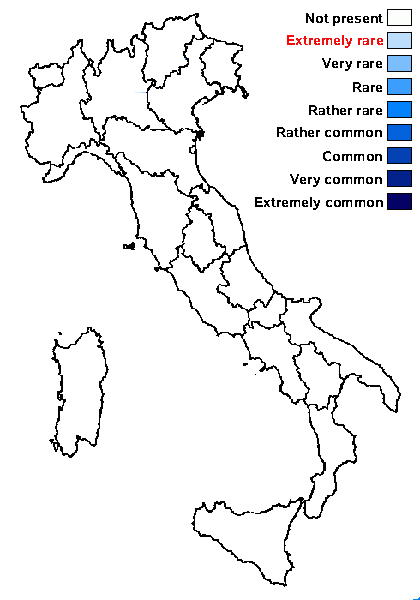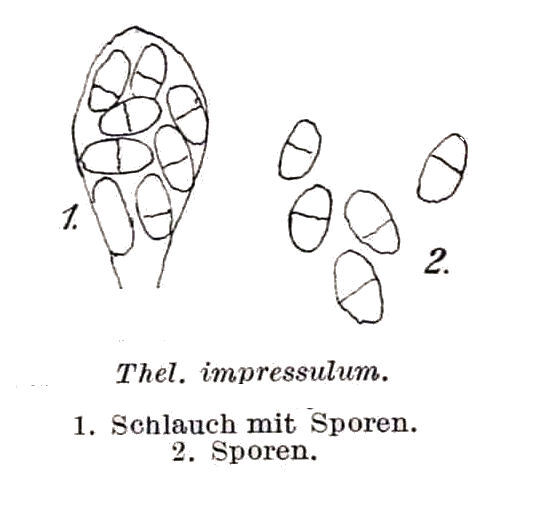Thelidium impressulum Zschacke
Hedwigia, 62: 125, 1920.
Synonyms:
Distribution:
Description: Thallus crustose, endosubstratic, forming small, orbicular, whitish grey patches on the thalli of endolithic Verrucaria-species. Perithecia black, 0.2(-0.3) mm across (in section), usually crowded, half-immersed, with a hemispherical, apically flattened upper part. Involucrellum reaching down to the base of the perithecium; exciple thin, brown-black throughout; hamathecium of periphyses and periphysoids, interascal filaments absent; hymenial gel I+ red (I+ blue at very low concentrations of I), K/I+ blue. Asci 8-spored, ellipsoid to clavate, I-, fissitunicate, the wall thickened above, with an ocular chamber, dehiscent by extrusion of a delicate rostrum. Ascospores 1-septate, hyaline, ellipsoid, 12-16 x 7-10 pm, surrounded by a gelatinous perispore. Photobiont chlorococcoid. Spot tests: K-, C-, KC-, P-, UV-. Chemistry: without lichen substances.Note: on calcareous rocks (dolomite at type locality), on the thalli of endolithic Verrucaria-species above the submediterranean belt; not rare in the Alps but probably regionally still undercollected; to be looked for in the Italian Alps.
Growth form: Crustose
Substrata: rocks
Photobiont: green algae other than Trentepohlia
Reproductive strategy: mainly sexual
paras endolithic Verrucaria-species

Predictive model
Growth form: Crustose
Substrata: rocks
Photobiont: green algae other than Trentepohlia
Reproductive strategy: mainly sexual
paras endolithic Verrucaria-species

Predictive model
 Index Fungorum
Index Fungorum
 GBIF
GBIF


